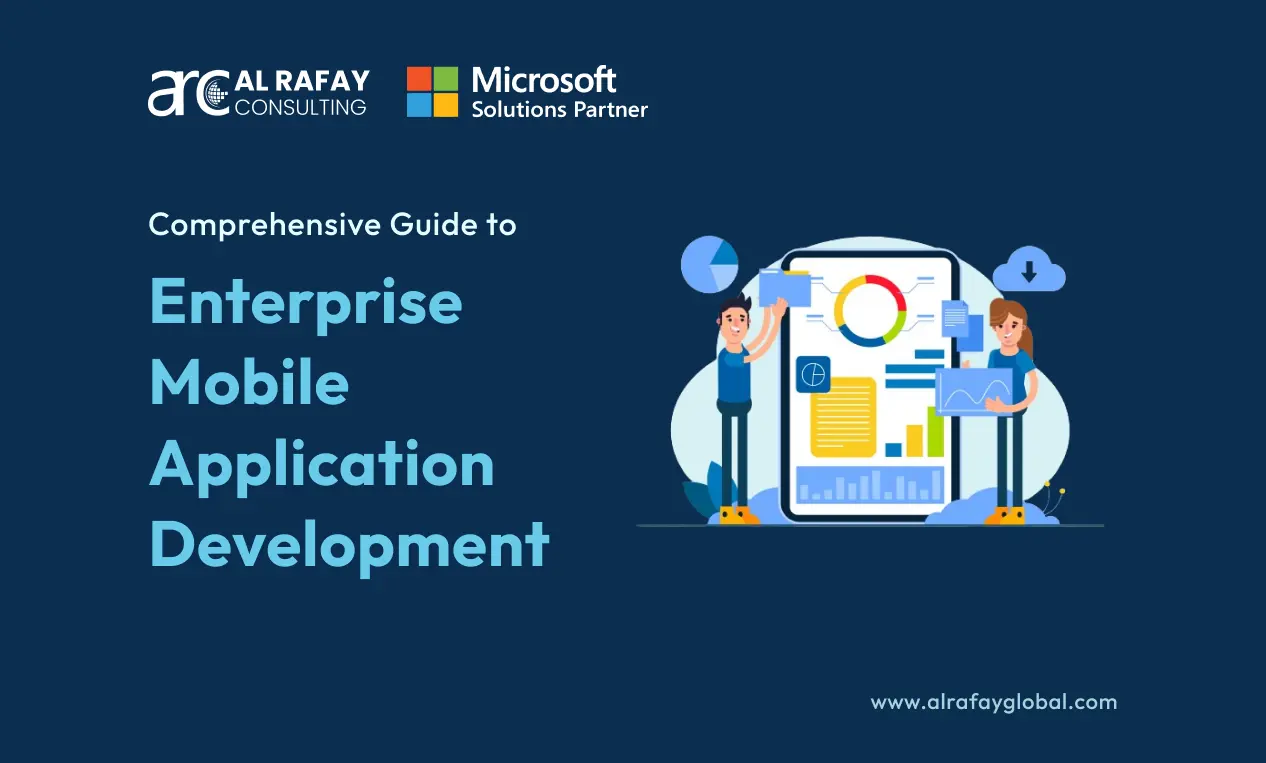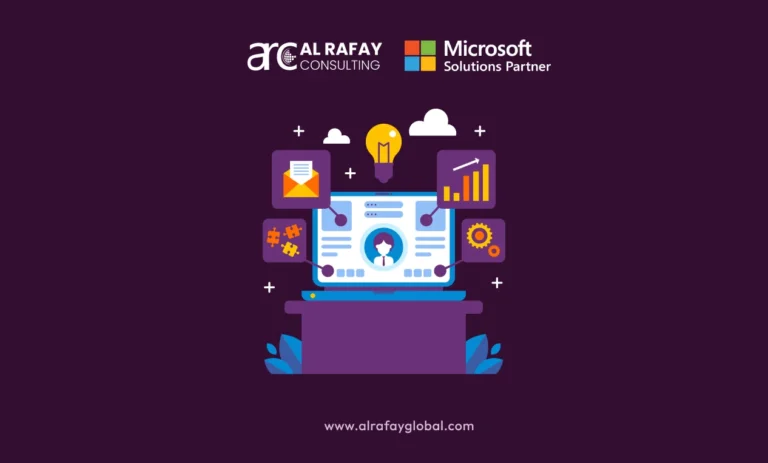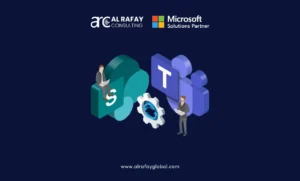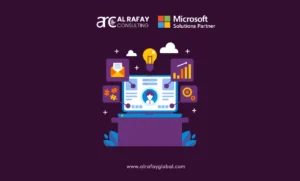Introduction
The role of mobile applications in enterprises has become paramount. Businesses are increasingly relying on mobile solutions to streamline operations, enhance customer engagement, and drive productivity. The mobile app market has witnessed exponential growth over the past decade. According to Statista, global enterprise mobile app revenues are projected to reach $334 billion by 2025, up from $241 billion in 2020.
Enterprise mobile applications have revolutionized the way businesses operate. They provide employees with access to real-time data, facilitate seamless communication, and enhance overall productivity. For instance, Microsoft’s studies have shown that the use of enterprise AI tools like Microsoft Copilot can significantly boost productivity, with 70% of users reporting increased productivity and 68% noting improved work quality.
The purpose of this blog is to understand in detail what enterprise mobile applications are, best practices for app development, and how you can plan a streamlined process. So, let’s start.
Understanding Enterprise Mobile Applications
Definition and Scope
What Are Enterprise Mobile Applications?
Enterprise mobile applications are software solutions designed to solve specific business problems and improve efficiency. Unlike consumer apps, these applications are tailored for use within an organization to support business processes and workflows.
Differences from Consumer Mobile Apps
● Target Audience: Enterprise apps are built for employees, partners, or other stakeholders, whereas consumer apps target the general public.
● Functionality: They often integrate with enterprise systems like ERP, CRM, and SCM.
● Security: Higher security measures are essential due to sensitive business data.
Types of Enterprise Mobile Applications
Internal vs. External Apps
● Internal Apps: Used within the organization to streamline operations and improve productivity.
● External Apps: Customer-facing apps that enhance user engagement and improve service delivery.
Benefits of Enterprise Mobile Applications
Increased Productivity
Mobile applications enable employees to access critical information and perform tasks on the go, leading to significant productivity gains.
Enhanced Customer Engagement
Customer-facing mobile apps improve user experience and engagement, fostering brand loyalty and satisfaction.
Streamlined Operations
By integrating mobile apps with enterprise systems, businesses can automate workflows, reduce manual efforts, and enhance operational efficiency.
Why Businesses Need Enterprise Mobile Applications: Business Owners Insights
Let’s take a look at some key statistics and insights from different surveys and business owners:
PWC News Platform’s 2023 Trust Survey: According to this survey, 90% of CEOs in the US attribute a significant portion of their organization’s success to enterprise mobile apps and believe building trust is their primary responsibility. This demonstrates the pivotal role mobile apps play in establishing and maintaining trust with stakeholders.
Samadhan Study: A digital initiative of the Indian Ministry of Labour and Employment study shows that about 7.5 hours per employee per week are saved by using specialized mobile apps. Moreover, 82% of enterprise owners believe that these apps have helped them generate additional business revenue. This highlights the efficiency and revenue-generating potential of enterprise mobile applications.
Gartner News Platform: According to Gartner, 66% of organizations are expected to increase their enterprise application development services investments in the next three years. This trend indicates a strong future demand for mobile apps as businesses continue to recognize their strategic value.
Grand View Research: This research indicates that the global enterprise app market will reach $123.41 billion by 2030. This massive growth underscores the increasing reliance on mobile apps to benefit both customers and employees, driving business operations and engagement to new heights.
Planning and Strategy
Identifying Business Needs
Analyzing Current Workflows
Understanding existing workflows is crucial for identifying areas where a mobile app can add value. Analyze how tasks are currently performed and pinpoint inefficiencies.
Identifying Pain Points
Identify specific pain points that can be addressed through mobile solutions, such as delays in communication, data entry errors, or lack of real-time information.
Defining Goals and Objectives
Setting Measurable Outcomes
Define clear, measurable goals for the mobile application, such as reducing process time by 30% or increasing customer satisfaction ratings.
Aligning App Goals with Business Objectives
Ensure that the app’s goals are aligned with broader business objectives. This alignment helps in securing stakeholder buy-in and ensures that the app delivers tangible business value.
Market Research and Competitor Analysis
Understanding the Competitive Landscape
Conduct thorough market research to understand the competitive landscape. Identify key players, their offerings, and market trends.
Identifying Key Features and Functionalities
Determine the features and functionalities that will make your app stand out. This could include advanced analytics, AI integration, or superior user experience.
Stakeholder Engagement
Involving Key Stakeholders
Engage key stakeholders from the outset to gather requirements and secure their commitment. Stakeholders can provide valuable insights and help ensure that the app meets business needs.
Gathering Requirements and Feedback
Use techniques such as surveys, interviews, and workshops to gather detailed requirements and feedback from stakeholders. This information is critical for defining the app’s scope and features.
Design and User Experience
Principles of Effective Mobile App Design
Simplicity and Intuitiveness
An effective mobile app design should be simple and intuitive, enabling users to perform tasks effortlessly. Avoid clutter and focus on essential features.
Consistency and Coherence
Maintain consistency in design elements such as color schemes, fonts, and navigation to provide a coherent user experience.
User Experience (UX) Best Practices
User-Centric Design
Adopt a user-centric design approach, focusing on the needs and preferences of the end-users. Conduct user research to understand their behaviors and pain points.
Prototyping and Wireframing
Create prototypes and wireframes to visualize the app’s layout and functionality. This helps identify potential issues early in the design phase.
UI/UX Tools and Technologies
Design Tools (e.g., Sketch, Figma)
Utilize design tools like Sketch, Figma, and Adobe XD to create and collaborate on app designs. These tools offer robust features for creating high-fidelity prototypes.
Usability Testing Tools
Conduct usability testing using tools like UserTesting and Lookback to gather feedback on the app’s design and functionality. This helps in refining the user experience.
Development Process
Choosing the Right Development Approach
Native vs. Hybrid vs. Cross-Platform
● Native Apps: Built specifically for a single platform (iOS or Android) using platform-specific languages (Swift, Kotlin). They offer superior performance and user experience.
● Hybrid Apps: Developed using web technologies (HTML, CSS, JavaScript) and wrapped in a native container. They offer faster development but may have performance limitations.
● Cross-Platform Apps: Developed using frameworks like React Native and Flutter, allowing a single codebase to run on multiple platforms. They balance performance and development speed.
Pros and Cons of Each Approach
● Native Apps: High performance and user experience, but higher development costs.
● Hybrid Apps: Faster development and lower costs, but potential performance issues.
● Cross-Platform Apps: Cost-effective and faster development, but may not fully leverage platform-specific features.
Technology Stack for Enterprise Mobile Apps
Backend Technologies (e.g., Node.js, Python)
Choose robust backend technologies like Node.js or Python for server-side development. These technologies offer scalability and flexibility for handling complex business logic.
Frontend Technologies (e.g., React Native, Flutter)
For frontend development, React Native and Flutter are popular choices due to their ability to create high-quality cross-platform apps.
Agile Development Methodology
Benefits of Agile in Mobile App Development
Agile methodology promotes flexibility, collaboration, and continuous improvement. It allows for iterative development and rapid response to changes.
Sprints, Iterations, and Continuous Feedback
Break the development process into sprints and iterations, with regular feedback loops. This ensures that the app evolves based on user feedback and changing business needs.
Integration with Enterprise Systems
Importance of Integration
Seamless Data Flow and Real-Time Updates
Integrating mobile apps with enterprise systems ensures seamless data flow and real-time updates. This integration enhances decision-making and operational efficiency.
Enhancing Business Processes
Integration with systems like ERP and CRM enables businesses to automate workflows, reduce manual efforts, and improve overall efficiency.
Common Integration Scenarios
ERP, CRM, and Other Enterprise Systems
Integrate the mobile app with ERP systems (like SAP, Oracle) and CRM systems (like Salesforce) to streamline business processes and enhance data visibility.
API Management and Middleware Solutions
Use API management tools and middleware solutions to facilitate integration. These tools ensure secure and efficient data exchange between the mobile app and enterprise systems.
Security Considerations
Data Encryption and Secure Communication
Implement data encryption and secure communication protocols (e.g., HTTPS, SSL/TLS) to protect sensitive business data.
User Authentication and Authorization
Use robust authentication and authorization mechanisms, such as OAuth and JWT, to ensure secure access to the app and enterprise systems.
Chapter 6: Testing and Quality Assurance
Importance of Testing
Ensuring App Reliability and Performance
Thorough testing is crucial to ensure the app’s reliability, performance, and security. It helps in identifying and fixing bugs before the app is deployed.
Identifying and Fixing Bugs
Conduct various types of testing to identify and fix bugs, ensuring a smooth user experience and preventing potential issues post-deployment.
Types of Testing
Unit Testing, Integration Testing, and System Testing
● Unit Testing: Test individual components for correct functionality.
● Integration Testing: Verify the interaction between different components.
● System Testing: Test the complete system to ensure it meets the specified requirements.
Usability Testing and Performance Testing
● Usability Testing: Evaluate the app’s user interface and user experience.
● Performance Testing: Assess the app’s performance under various conditions, including load and stress testing.
Tools and Frameworks for Testing
Automated Testing Tools (e.g., Appium, Selenium)
Automate testing tools like Appium and Selenium to streamline the testing process and ensure consistent test coverage.
Manual Testing Strategies
Complement automated testing with manual testing strategies to uncover issues that automated tests might miss, particularly in terms of user experience.
Deployment and Maintenance
Preparing for Deployment
App Store and Google Play Guidelines
Deploying an enterprise mobile application requires adherence to the guidelines set by app distribution platforms like the Apple App Store and Google Play. Each platform has its specific requirements:
● Apple App Store: Apple has stringent guidelines that focus on app design, functionality, performance, and legal issues. Key considerations include:
○ User Interface: The app must adhere to Apple’s Human Interface Guidelines, ensuring a seamless and intuitive user experience.
○ Performance: The app must be stable and efficient. Apps that crash frequently or have significant bugs will be rejected.
○ Content: The app’s content must be appropriate and not infringe on third-party rights. This includes intellectual property and user data privacy.
○ Privacy and Security: Apps must clearly state their data collection practices and must not misuse personal information.
● Google Play: Google’s guidelines are more flexible but still emphasize key areas:
○ Technical Performance: The app should function well on various Android devices, ensuring compatibility and performance.
○ User Experience: Apps should follow Material Design principles to provide a consistent user experience.
○ Privacy and Data Security: Apps must handle user data responsibly and comply with Google Play’s user data policies.
Compliance with these guidelines is crucial to ensure a smooth approval process and to avoid delays in launching your app.
Beta Testing and User Feedback
Before the official launch, conduct extensive beta testing to identify potential issues and gather user feedback. This phase involves:
● Closed Beta: Involves a select group of users, often within the organization, to test the app in a controlled environment.
● Open Beta: Expands testing to a broader audience, including external users, to get diverse feedback and identify a wider range of issues.
Gathering feedback during beta testing helps in:
● Bug Identification: Detecting and fixing bugs that may not have been caught during internal testing.
● Usability Improvements: Understanding user behavior and making necessary adjustments to improve the user experience.
● Feature Validation: Confirm that all features work as intended and meet user expectations.
Release Management
Version Control and Continuous Integration
Effective release management involves maintaining a robust version control system and continuous integration (CI) practices:
● Version Control: Tools like Git help manage changes to the app’s codebase, track different versions, and facilitate collaboration among development teams.
● Continuous Integration: CI tools like Jenkins, Travis CI, and CircleCI automate the process of integrating code changes, running tests, and deploying builds. This ensures that the app is always in a deployable state, reducing the risk of integration issues.
Rollout Strategies
Plan the rollout strategy carefully to minimize disruptions and ensure a smooth launch:
● Phased Rollout: Release the app to a limited audience initially and gradually expand availability. This helps in monitoring the app’s performance and addressing any issues before a full-scale launch.
● Feature Flags: Use feature flags to enable or disable features dynamically. This allows for testing new features in a production environment without affecting all users.
● Monitoring and Feedback Loops: Continuously monitor the app’s performance and user feedback post-launch to identify and resolve issues promptly.
Post-Deployment Support
Monitoring App Performance
Post-deployment support is critical for maintaining the app’s performance and user satisfaction:
● Performance Monitoring Tools: Use tools like New Relic, AppDynamics, and Firebase Performance Monitoring to track the app’s performance metrics, such as load times, crash rates, and server response times.
● User Analytics: Tools like Google Analytics, Mixpanel, and Amplitude provide insights into user behavior, helping to identify areas for improvement and optimization.
Regular Updates and Bug Fixes
Regular updates are essential to keep the app relevant and functional:
● Bug Fixes: Address bugs and issues reported by users promptly to maintain a high-quality user experience.
● Feature Enhancements: Introduce new features and improvements based on user feedback and changing business needs.
● Security Updates: Ensure that the app is always secure by regularly updating it to address any security vulnerabilities.
Future Trends in Enterprise Mobile Development
Emerging Technologies
AI and Machine Learning Integration
AI and machine learning are transforming enterprise mobile applications by offering advanced capabilities:
● Personalization: AI algorithms analyze user behavior to provide personalized content and recommendations, enhancing user engagement.
● Predictive Analytics: Machine learning models predict trends and behaviors, enabling businesses to make data-driven decisions.
● Automation: AI-powered chatbots and virtual assistants automate routine tasks, improving efficiency and customer service.
IoT and Mobile App Connectivity
The integration of IoT with mobile apps is creating new opportunities for businesses:
● Remote Monitoring: IoT-enabled mobile apps allow businesses to monitor equipment and processes remotely, improving operational efficiency and reducing downtime.
● Smart Devices: Mobile apps can control smart devices, enabling automation and enhancing user convenience.
● Data Collection: IoT devices generate vast amounts of data that can be analyzed to gain insights and improve decision-making.
Trends Shaping the Future
5G and Its Impact on Mobile Apps
The advent of 5G technology is set to revolutionize mobile app development:
● Faster Data Transfer: 5G offers significantly higher data transfer rates, enabling real-time communication and data processing.
● Low Latency: Reduced latency improves the responsiveness of mobile apps, enhancing user experience in applications like gaming and video conferencing.
● Enhanced Connectivity: 5G’s ability to support a large number of connected devices will drive the growth of IoT and smart cities.
Augmented Reality (AR) and Virtual Reality (VR)
AR and VR technologies are creating immersive experiences for enterprise mobile applications:
● Training and Simulation: AR and VR provide realistic training environments, improving employee learning and development.
● Enhanced Customer Experiences: Retailers use AR to offer virtual try-ons, while real estate companies provide virtual property tours.
● Collaboration: VR enables remote teams to collaborate in virtual environments, enhancing communication and productivity.
Preparing for the Future
Adapting to New Technologies
Stay ahead of the curve by continuously exploring and adopting emerging technologies:
● R&D Investments: Invest in research and development to explore new technologies and their potential applications.
● Pilot Projects: Implement pilot projects to test new technologies and gather insights before full-scale deployment.
Continuous Learning and Development
Ensure that your development team is well-equipped to handle future challenges:
● Training Programs: Offer training programs and workshops to keep your team updated with the latest technologies and best practices.
● Knowledge Sharing: Encourage knowledge sharing and collaboration within the team to foster a culture of continuous learning.
Cost of Enterprise Mobile Application Development Based on Regions
Factors Influencing Development Costs
Complexity and Scope of the App
The complexity and scope of the app are major factors influencing development costs. More complex apps with advanced features and integrations will require a higher budget.
Technology Stack and Features
The choice of technology stack and features also impacts the cost. Advanced technologies and features may increase the development time and cost.
Regional Cost Comparison
North America
Development costs in North America are generally higher due to higher labor rates. According to Clutch, the average hourly rate for app development in North America ranges from $150 to $250.
Europe
Europe offers a range of development costs, with Eastern Europe being more cost-effective compared to Western Europe. Rates in Eastern Europe range from $40 to $120 per hour.
Asia-Pacific
The Asia-Pacific region, particularly countries like India and Vietnam, offers competitive development costs, ranging from $20 to $70 per hour.
Other Regions
Other regions, such as Latin America and Africa, also offer cost-effective development options, with rates ranging from $30 to $90 per hour.
Wrapping Up
In this guide, we explored the comprehensive process of enterprise mobile application development, from understanding the basics to planning, deploying, and maintaining these apps.
If you are looking for expert enterprise mobile application development services, then contact our Microsoft-certified consultants at Al Rafay Consulting. We have more than 10 years of experience in developing customer enterprise apps for various industries.













